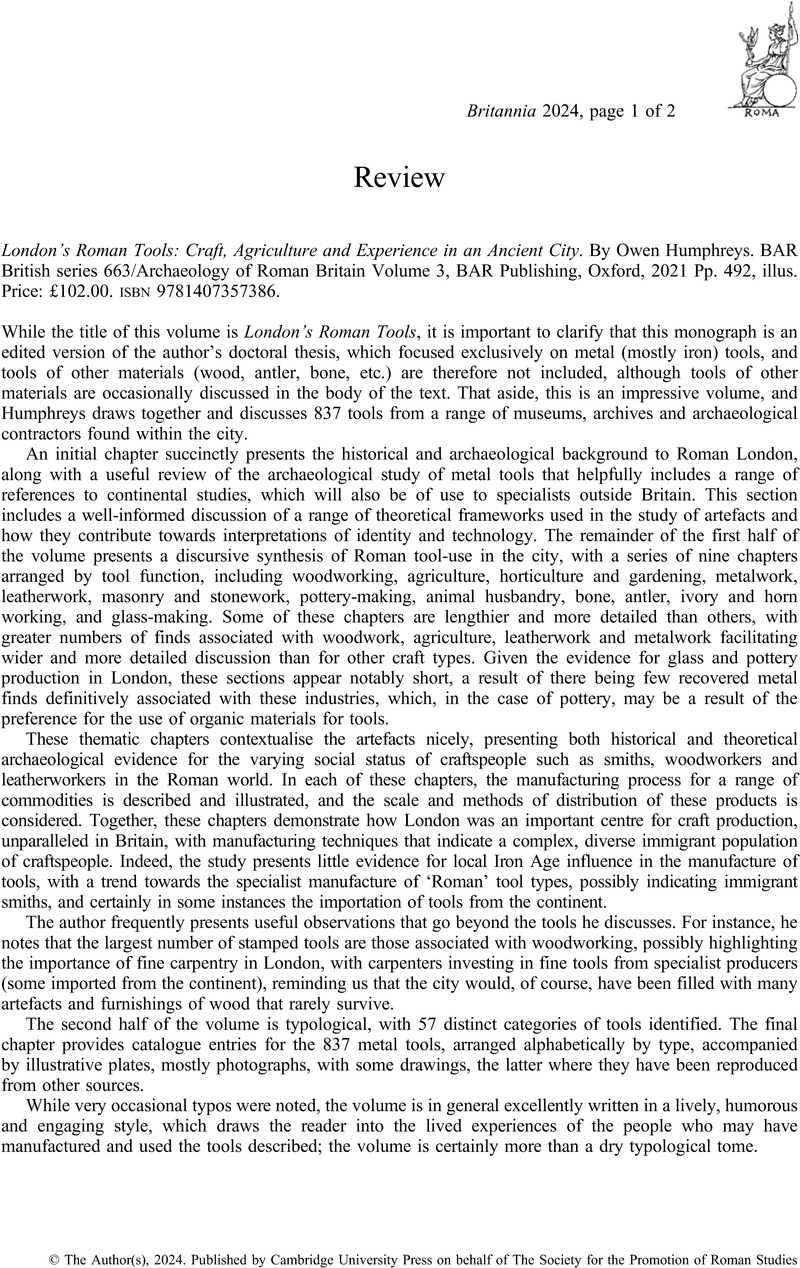No CrossRef data available.
London's Roman Tools: Craft, Agriculture and Experience in an Ancient City. By Owen Humphreys. BAR British series 663/Archaeology of Roman Britain Volume 3, BAR Publishing, Oxford, 2021 Pp. 492, illus. Price: £102.00. isbn 9781407357386.
Review products
London's Roman Tools: Craft, Agriculture and Experience in an Ancient City. By Owen Humphreys. BAR British series 663/Archaeology of Roman Britain Volume 3, BAR Publishing, Oxford, 2021 Pp. 492, illus. Price: £102.00. isbn 9781407357386.
Published online by Cambridge University Press: 31 May 2024
Abstract
An abstract is not available for this content so a preview has been provided. Please use the Get access link above for information on how to access this content.

- Type
- Reviews
- Information
- Copyright
- Copyright © The Author(s), 2024. Published by Cambridge University Press on behalf of The Society for the Promotion of Roman Studies


